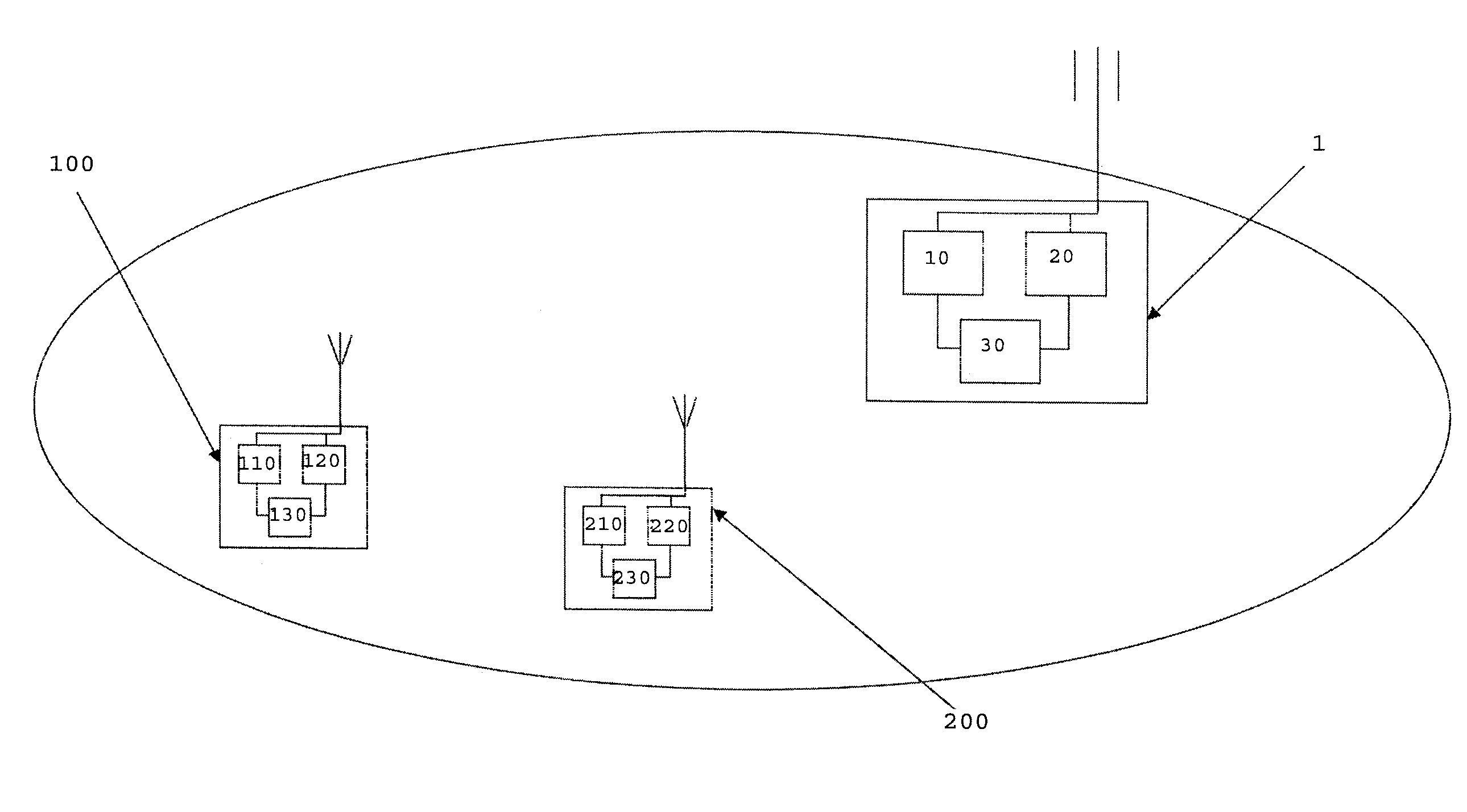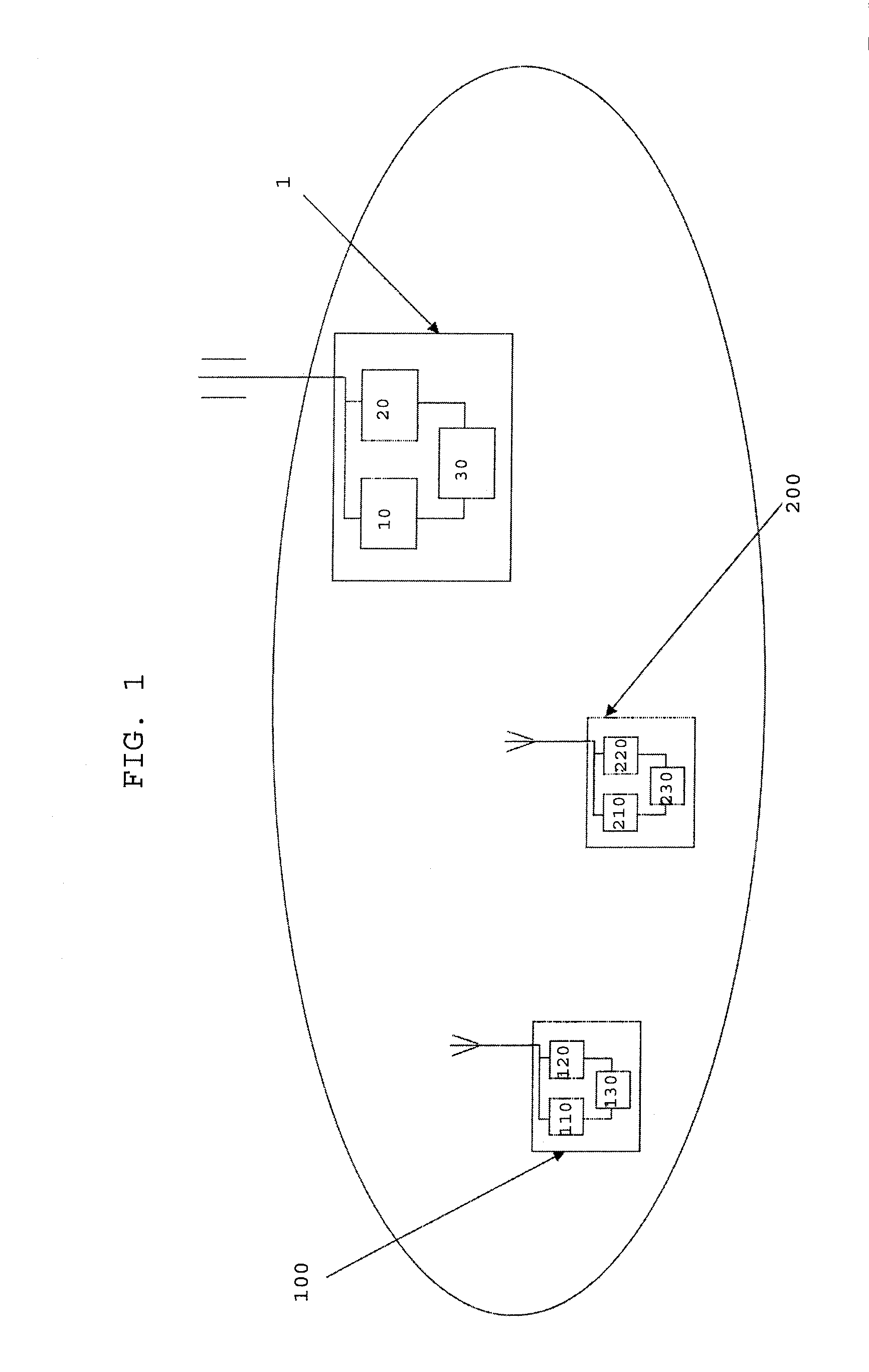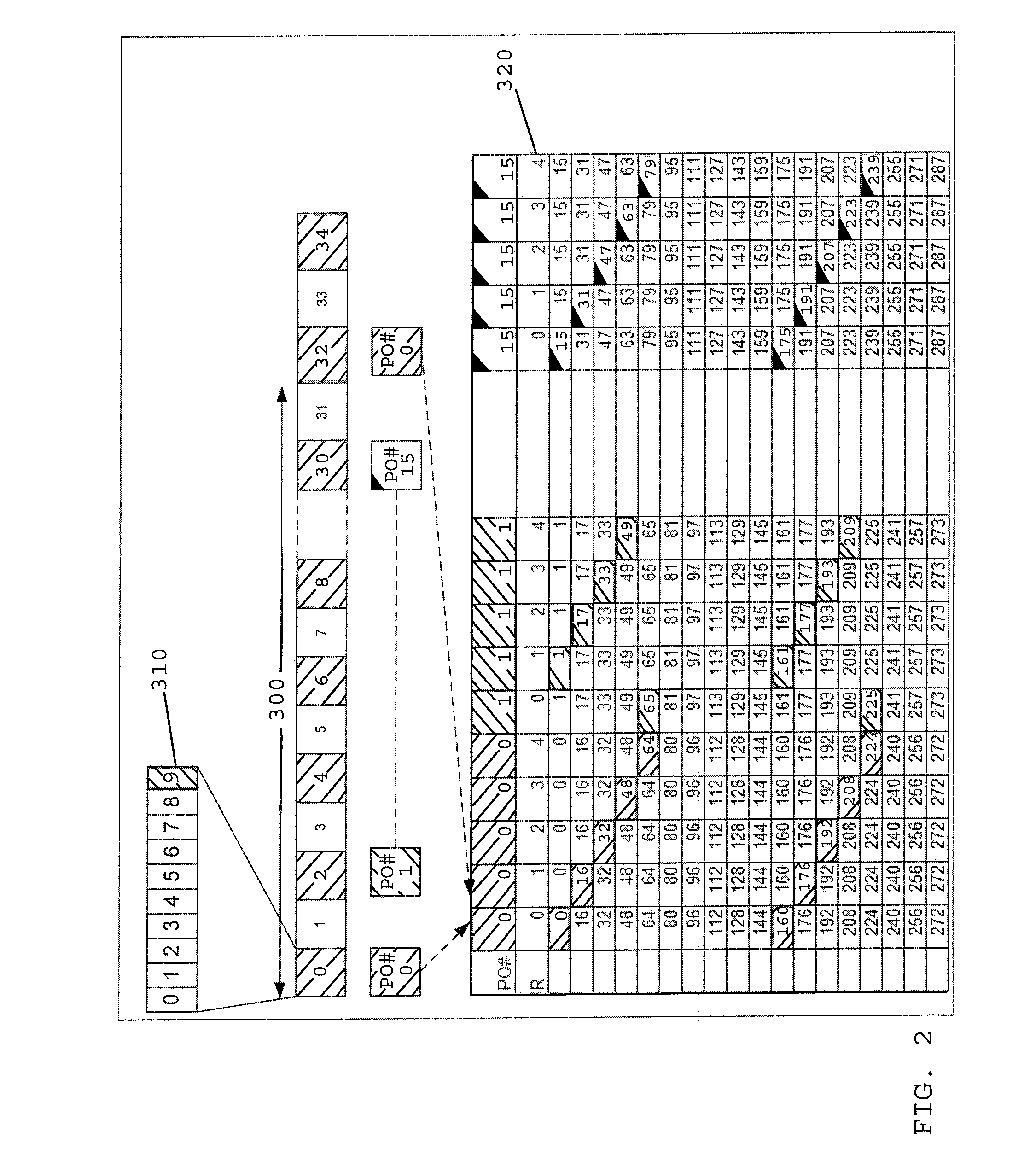Access to a cellular network for machine type communication devices
a technology of machine-type communication devices and cellular networks, which is applied in the direction of machine-to-machine/machine-type communication services, broadcast services, electrical appliances, etc., can solve the problems of reducing the capacity of mtc devices, not expecting the large number of mtc devices to require significant changes in network dimensions, and reducing the service life of mtc devices
- Summary
- Abstract
- Description
- Claims
- Application Information
AI Technical Summary
Benefits of technology
Problems solved by technology
Method used
Image
Examples
Embodiment Construction
[0053]Referring first to FIG. 1, there is shown a schematic diagram detailing an example configuration of MTC devices in a cellular network. There is provided: a base station 1; a first MTC device 100; and a second MTC device 200.
[0054]The base station 1 may be GSM base station, a UMTS Node B, an LTE eNode B or any other cellular network base station device. The base station 1 comprises: a transmitter 10; a receiver 20; and a processor 30. Similarly, the first MTC device 100 is a UE comprising a transmitter 110; a receiver 120; and a processor 130 and the second MTC device 200 is a UE comprising a transmitter 210; a receiver 220; and a processor 130. It will be understood that the base station 1, first MTC device 100 and second MTC device 200 also comprise other hardware, software or both in order to carry out their functions.
[0055]A number of different approaches are now described for controlling the first MTC device 100, second MTC device 200 or both in order to restrict their tra...
PUM
 Login to view more
Login to view more Abstract
Description
Claims
Application Information
 Login to view more
Login to view more - R&D Engineer
- R&D Manager
- IP Professional
- Industry Leading Data Capabilities
- Powerful AI technology
- Patent DNA Extraction
Browse by: Latest US Patents, China's latest patents, Technical Efficacy Thesaurus, Application Domain, Technology Topic.
© 2024 PatSnap. All rights reserved.Legal|Privacy policy|Modern Slavery Act Transparency Statement|Sitemap



